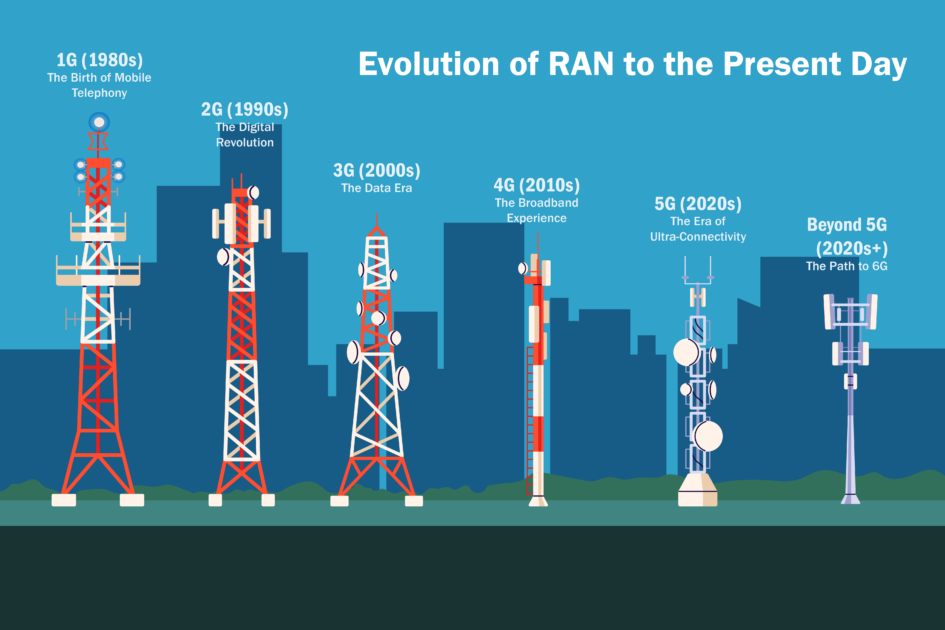
RAN-tastic Opportunities: Driving the Future of Telecommunications
Subscribe to receive the latest content and invites to your inbox.
The telecom landscape is undergoing a transformation unlike anything we've seen before, and at the heart of this epic shift is the Radio Access Network (RAN).
What used to be a quiet, behind-the-scenes player in mobile communications has now become the backbone of modern connectivity—powering everything from the phone in your pocket to entire smart cities.
For telco leaders and Network Operations Center (NOC) pros, RAN isn't just about keeping pace with technology; it's about strategically leveling up networks to thrive in the digital era.
This post delves into the treasure trove of RAN opportunities and why it has become the must-have investment to drive telco innovation and efficiency.
Why RAN is the Secret Sauce for Telco Success
RAN isn't just a network component anymore—it's a strategic investment for telecom operators who want bring their A-game and future-proof their networks. As mobile tech has evolved from 1G to 5G (and beyond!), RAN has been crucial to making it all happen. But why are telcos all-in on RAN right now?
In today's hyper-digital world, mobile network demands are through the roof.
Customers want seamless service, ultra-fast speeds, and rock-solid reliability, all while telcos juggle cost efficiency with performance. Enter RAN—offering telcos a way to trim capital expenditures (CapEx) with cutting-edge technologies like Open RAN (O-RAN) and virtualized RAN (vRAN). These innovations swap pricey proprietary hardware for flexible, off-the-shelf solutions, helping operators save big while boosting network intelligence.
By tapping into RAN technology that leverages automation and AI, telcos can ditch manual interventions and ramp up efficiency. With real-time monitoring, predictive maintenance, and faster rollouts, telecom companies can stay ahead in this fast-paced market.
But RAN isn't just about better connectivity—it unlocks a whole world of innovative new services, from ultra-reliable low-latency communication (URLLC) to the high-speed, mission-critical connections that power IoT, autonomous cars, and more.
A Trip Down RAN Memory Lane
RAN's journey pretty much mirrors that of mobile technology—ever-evolving and constantly pushing the envelope. From the analog days of 1G to the ultra-connected 5G era, RAN has gone from basic hardware to sleek, high-tech systems powering advanced data services.

A fun recap of RAN's progress over the years:
- 1G (1980s): The birth of mobile phones! Back then, cell towers provided analog voice calls but with minimal coverage.
- 2G (1990s): Enter the digital age! GSM brought clearer voice quality and the rise of SMS (remember texting in the early days?). RAN technology improved with digital modulation, frequency reuse, and wider coverage.
- 3G (2000s): The data era ushered in 3G networks, bringing mobile internet and services like UMTS and HSPA for quicker data transfers.
- 4G (2010s): LTE kicked things into high gear, offering blazing data speeds, VoLTE (voice over LTE), and massive network capacity.
- 5G (2020s): The latest frontier, 5G, is all about super-connectivity. RAN now taps into mind-blowing tech like Massive MIMO, edge computing, and network slicing to make smart cities, IoT, and driverless cars a reality.
And the journey isn't over yet. 6G is on the horizon, promising even faster speeds, smarter networks (thanks, AI), and deep cloud and edge computing integration.
Efficiency, Innovation, and Connectivity: The RAN Trifecta
The most exciting part of RAN's evolution? The sheer number of opportunities it brings for today's telecom operators.
As RAN shifts from old-school hardware to cloud-based, software-defined architectures, telcos are unlocking new levels of efficiency and performance.
Here's how:
- CapEx Optimization: Adopting O-RAN and vRAN helps telcos cut costs by disaggregating hardware from software, making multi-vendor interoperability a breeze. Lower initial investments, easier upgrades, and streamlined maintenance? Yes, please!
- Operational Excellence: Automation and AI are becoming BFFs with modern RAN systems, enabling real-time monitoring and predictive maintenance. No more scrambling to fix network issues—automation keeps things running smoothly and cuts down on costly operational tasks. Plus, AI supercharges complex network management, optimizing resources with minimal human input.
- Beyond Connectivity: RAN isn't just about better coverage; it's about enabling innovative services like URLLC. Think remote surgeries, autonomous driving, and other mission-critical applications that rely on ultra-fast, super-reliable connections.
RAN's future isn't just about zippier speeds or more bars on your phone—it's about building smarter, more efficient networks capable of handling the next-gen demands of modern communication (and beyond).
Wrapping Up
The Radio Access Network is driving the future of telecom. From its early days in 1G to today's ultra-connected 5G world, RAN's journey has been one of continuous transformation, offering telcos new opportunities to enhance customer experiences, streamline operations, and spark true innovation.
Looking ahead, embracing automation and AI within the RAN ecosystem will be key to staying competitive. Automation ensures consistent network performance and lowers costs, while AI promises even more exciting changes—think self-healing networks, smart traffic management, and real-time decision-making.
The opportunities RAN presents are huge, but to unlock its full potential, telcos must invest wisely and strategically.
Those that do will be ready to meet the demands of tomorrow's digital world head-on.
Ready to revamp your RAN and drive operational excellence with automation and AI? Let's chat about how we can help you revolutionize your network.






